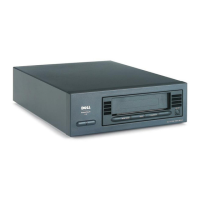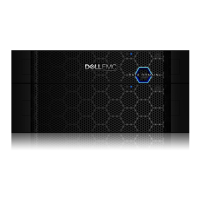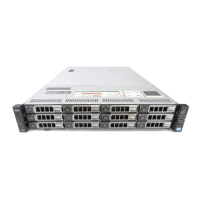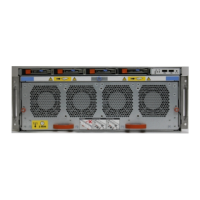The first time protection is added for a machine, a base image (that is, a snapshot of all the data in
the protected volumes) will transfer to the repository on the Rapid Recovery Core following the
schedule you defined, unless you specified to initially pause protection.
• If you selected a Typical configuration for the Protect Machine Wizard and specified custom
protection, then click Next to set up a custom protection schedule. For details on defining a
custom protection schedule, see “Creating custom protection schedules” section in the Rapid
Recovery 6.0 on DL Appliances User’s Guide. .
• If you selected Advanced configuration for the Protect Machine Wizard, and default protection,
then click Next and proceed to Step 14 o see repository and encryption options.
• If you selected Advanced configuration for the Protect Machine Wizard and specified custom
protection, then click Next and proceed to Step 11 to choose which volumes to protect.
10. On the Protection Volumes page, select which volumes you want to protect. If any volumes are
listed that you do not want to include in protection, click in the Check column to clear the selection.
Then click Next.
NOTE: Typically, it is good practice to protect, at minimum, the System Reserved volume and
the volume with the operating system (typically the C drive).
11. On the Protection Schedule page, define a custom protection schedule and then click Next. For
details on defining a custom protection schedule, see “Creating custom protection schedules”
section in the
Rapid Recovery 6.0 on DL Appliances User’s Guide.
If you already have repository information configured, and you selected the Advanced option in Step
1, then the Encryption page appears. Proceed to Step 13.
12. Optionally, on the Encryption page, to enable encryption, select Enable Encryption.
Encryption key fields appear on the Encryption page.
NOTE: If you enable encryption, it will be applied to data for all protected volumes for this
machine.
You can change encryption settings later from the Rapid Recovery Core Console.
For more information about encryption, see the topic “Understanding encryption keys” in the
Rapid Recovery 6.0 on DL Appliances User’s Guide at www.dell.com/support/home.
CAUTION: Rapid Recovery uses AES 256-bit encryption in the Cipher Block Chaining (CBC)
mode with 256-bit keys. While using encryption is optional, Dell highly recommends that you
establish an encryption key, and that you protect the passphrase you define. Store the
passphrase in a secure location as it is critical for data recovery. Without a passphrase, data
recovery is not possible.
13. On the Encryption page, select one of the following options:
• If you want to encrypt this protected machine using an encryption key that is already defined on
this Rapid Recovery Core, select Encrypt data using an existing Encryption key, and then select
the appropriate key from the drop-down menu. Proceed to the next step.
• If you want to add a new encryption key to the Core and apply that key to this protected
machine, then enter the information as described in the following table.
Table 9. Encryption key settings
Text Box Description
Name Enter a name for the encryption key.
Encryption key names must contain between 1 and 130 alphanumeric
characters. You may not include special characters such as the back slash,
forward slash, pipe, colon, asterisk, quotation mark, question mark, open or
47

